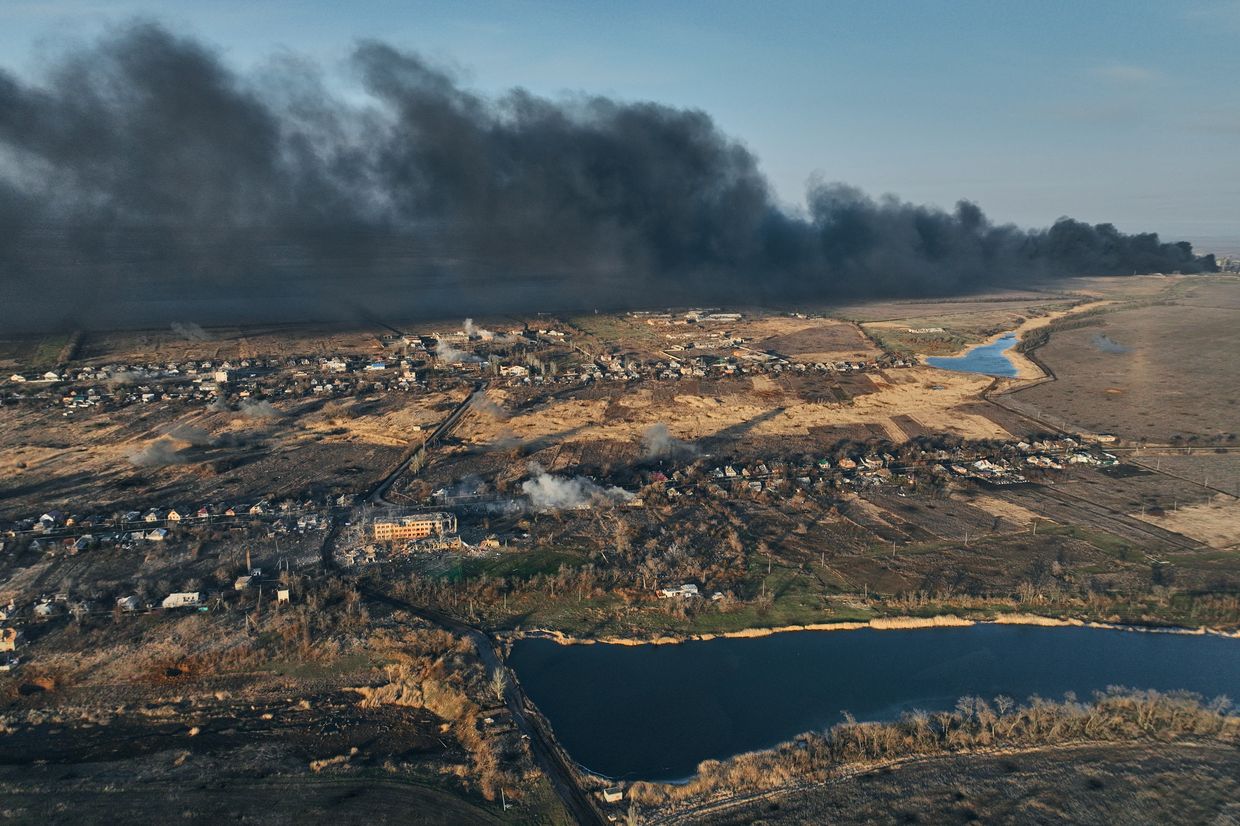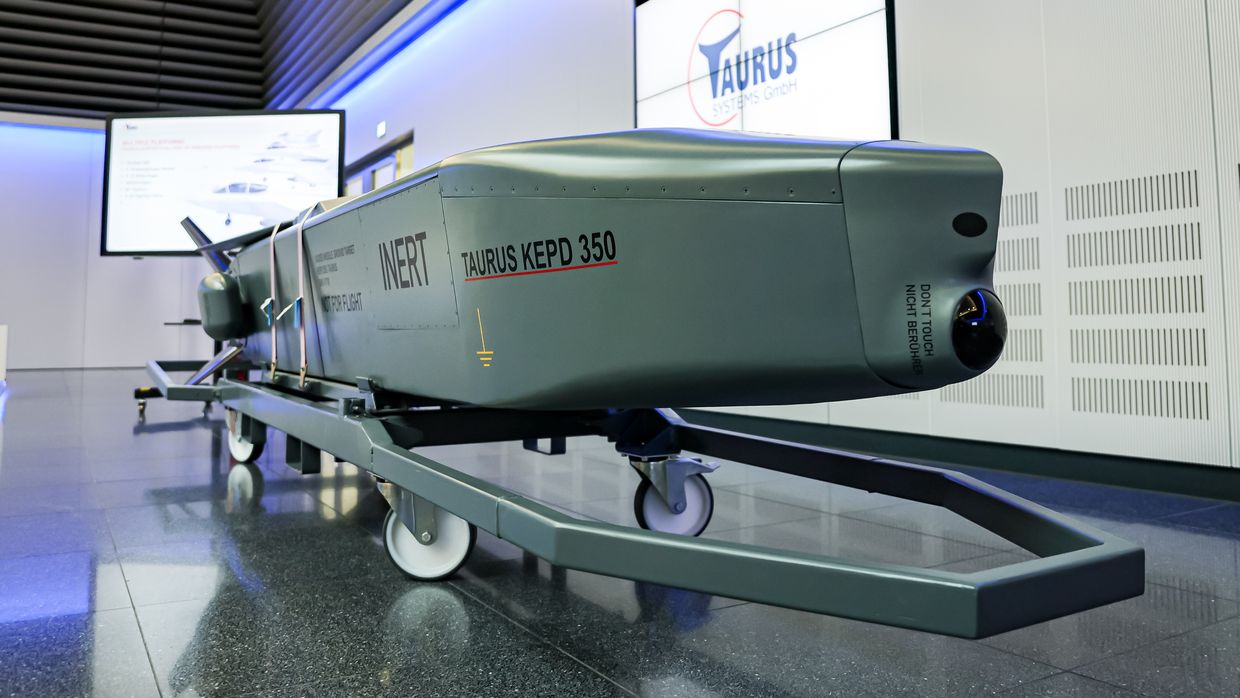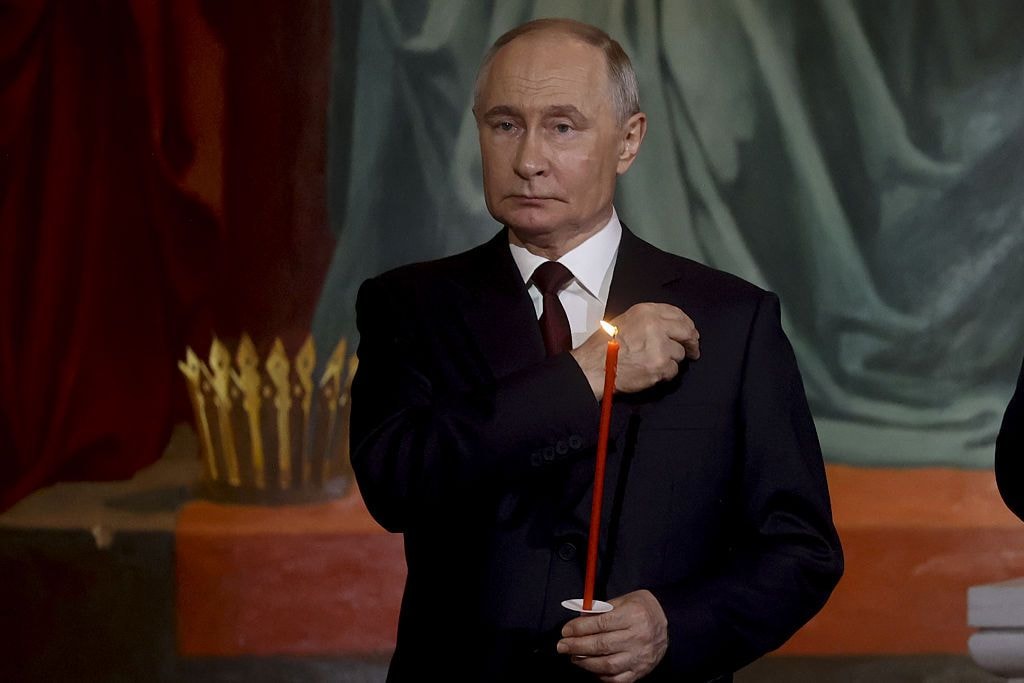
Ukrainian drones hit one Russian oil refinery after another
Photo for illustrative purposes. Vapour escapes from processing complex during operations at the Bashneft-Ufaneftekhim oil refinery, operated by Bashneft PAO, in Ufa, Russia, on Tuesday, Sept. 27, 2016. Bashneft distributes petroleum products and petrochemicals around the world and in Russia via filling stations. (Andrey Rudakov/Bloomberg via Getty Images)
Ukraine faces a challenging problem: how to stop a resurgent Moscow in its tracks long enough to rotate the troops, resupply, and fortify.
Part of the answer is playing out right now in the skies over Russia. Over the past two weeks, at least dozens of Ukrainian drones reportedly struck at least nine Russian regions. The majority of the drones had very specific targets: oil refineries.
Many have hit their targets as fires and explosions have been reported at fuel processing plants across Russia.
Ukraine has been striking oil infrastructure in Russia since the beginning of the full-scale war but that kicked into high gear in the late fall of 2023. According to The Insider, there have been 15 drone attacks against 13 oil refineries in nine regions of Russia in 2024. Multiple refineries reportedly lost some capacity after the attacks, with the latest series continuing for the majority of March.
“Ukraine continues to have important successes with its drone strikes against Russian oil and industrial infrastructure,” said Federico Borsari, an unmanned tech scholar with the Center for European Policy Analysis.
This goes hand in hand with Ukraine’s earlier attacks on Russia’s hydrocarbon-pumping port infrastructure in Ust-Luga and Novorossiysk — Russia’s primary gateways to export the oil and gas that keep the whole country and its invasion of Ukraine running.
If the attacks can be sustained at a high tempo, they could slow Russia’s war machine and economy, raise spending, pressure Russia to move air defenses, reduce exports, and cause unfavorable price swings on fuel.
This could buy Ukraine more time. The country is currently on the back foot, with a severe shell shortage due to factional Republican grandstanding in the U.S. Congress. Russia has intensified its attacks on multiple fronts, seeing the opportunity to break through after the capture of Avdiivka in mid-February.
According to Borsari, these attacks typically involve medium-sized fixed-wing one-way-attack drones with a propeller engine that can fly for hundreds of kilometers.
Most reports about the attacks attribute them to the Security Service of Ukraine (SBU) or the military intelligence of Ukraine (HUR), or both.
The latest attacks started a fire at refineries in Krasnodar Krai and Samara region on March 16-17. A day earlier, an attack reportedly caused a large fireball at a facility in Kaluga region. Another powerful strike hit an Oryol region refinery on March 12.

In Nizhny Novgorod, Ukrainian drones hit a refinery unit inside an industrial zone, forcing Russian energy corporation Lukoil to temporarily stop processing oil there. There have also been reports of strikes in Volgograd, Ryazan, Bryansk, Leningrad, Tula, and Smolensk regions. One hit on a refinery in Krasnodar Krai reportedly dropped its output by 30%.
According to news reports, Ukrainian drones also struck a Russian Federal Security Service (FSB) building in Belgorod and at least one factory.
The damage is hard to estimate, except indirectly, through statistics. Russian seaborne exports of crude oil fell by 340,000 barrels a day to a seven-week low of 3.06 million per day in January. Russian oil refineries reduced operations by 4% in January compared to the same period the year before.
“The goal of these strikes is to destroy energy facilities and refinery plants that provide critical fuel supplies for the Russian forces in Ukraine and deprive the aggressor of the necessary steam to continue offensive operations,” Borsari said.
“Damaged fuel depots and reduced fuel processing and distribution capacity mean delays and diminished supplies for mechanized Russian assault units that are trying to push in key areas.”
The campaign is also likely aimed at reducing Russia’s exports of refined material, hitting it in the wallet.
Oil and gas sales have always been a cash cow for Russia, but after the full-scale invasion, sales of oil to countries like China and India jumped to being the single greatest driver of Russia’s economy and war effort.

Elina Ribakova, an economist at the D.C.-based think tank Peterson Institute said Ukraine’s campaign would “do what the sanctions haven’t been able to.”
Ukraine’s attacks against Russia’s oil and gas infrastructure at its ports in Ust-Luga and Novorossiysk can also be very damaging, said Viktor Kevliuk, a Ukrainian military expert with the Center for Defense Strategy. If Ukraine can take out the equipment to pump oil and gas into ships, that means long, costly delays for Russia. Kevliuk said that the equipment used at the ports was ordered from firms in Europe and paid for in euros; it would be difficult for Russia to order a replacement now due to sanctions.
Kirill Mikhailov, a researcher with the Conflict Intelligence Team, said that the refinery destruction may cause fuel price swings. This could complicate Russian logistics. Russian forces use many pickup trucks to deliver small loads to their troops. These are often fueled out of the soldiers’ pockets and price spikes may complicate that.
Several analysts pointed out that the attacks can force Moscow to deploy additional air defense units that are needed closer to the front, reducing front-line forces’ air cover.
But in order for this to be a serious problem and not an inconvenience for Russia, Ukraine must be able to strike frequently and consistently.
“There's a substantial number of these types of facilities within the likely range or probabilistic range of Ukrainian strike capabilities, but much will depend on the extent to which Ukraine can scale up the campaign,” said Michael Kofman, a war scholar with the Carnegie Endowment for International Peace.

Drones are much easier to get than long-range missiles, which allied countries are reluctant to provide, fearing escalation. But producing drones on an industrial scale could be the limiting factor. Kofman said that “Ukraine increasingly has the capacity but lacks the financing.”
Even if Ukraine manages to solve this challenge, multiple experts cautioned that a successful drone campaign is not tantamount to victory.
“The deep battle is meant to degrade and suppress and is not a substitute for ground operations,” Kofman said. “Success in such a campaign should be seen as part of a broader strategy, but not misrepresented as a war winning approach on its own.”
Note from the author:
Hi, this is Igor Kossov, I hope you enjoyed reading our article.
I consider it a privilege to keep you informed about one of this century's greatest tragedies, Russia's ongoing invasion of Ukraine. With the help of my colleagues, I will continue to bring you in-depth insights into Ukraine's war effort, its international impacts, and the economic, social, and human cost of this war. But I cannot do it without your help. To support independent Ukrainian journalists, please consider becoming our member. Thank you very much.












